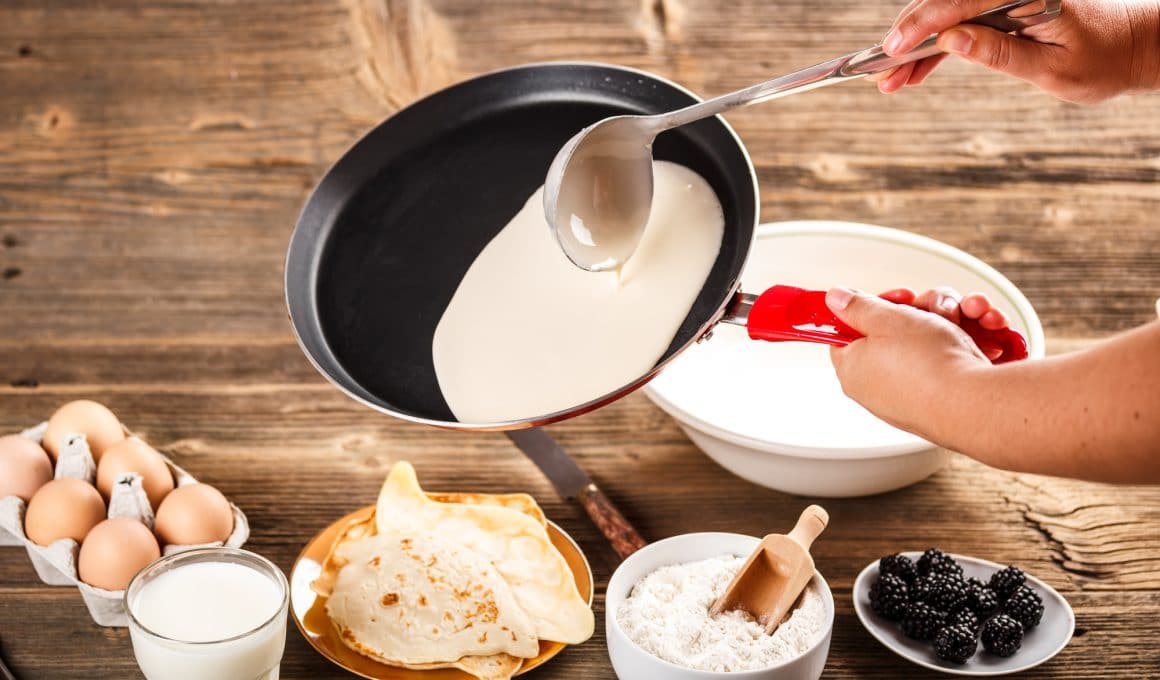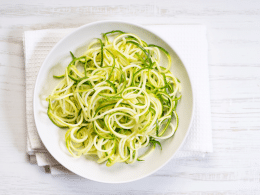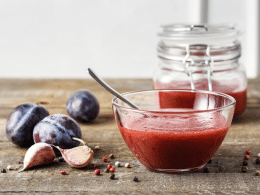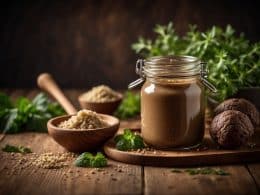Whether it’s breakfast or just a snack in the late afternoon, pancakes are always a winner! Nothing compares to the feeling of waking up to a plate of pancakes drizzled with syrup and butter on the dining table all ready for breakfast. Pancakes also make a great snack in the middle of the day, or topped with peanut butter for before a workout. They have the amazing ability to make even an ordinary day special.
While they’re yummy to eat, it can be a hassle to make pancake batter every time you want pancakes. You have two choices – either buy a box of pre-mixed ingredients or make up an extra-large batch of your own batter from scratch at home and store it for later use.
A pancake mix consists of flour, sugar, raising agents, and other additives like flavorings and colorants. Because the box mixes contain preservatives, the pancake mix can last for up to 6-12 months, given that they are stored properly. If you buy a larger container and need to store the unused portion, make sure to place it in an air-tight container like a food-safe plastic container with a tight lid, a mason jar, or a sealable plastic bag. Keep the mix in a cool place away from too much light.
The most convenient option is probably to mix up a box of pre-mix pancake batter and store it in the fridge, ready for when you want to make a few pancakes. If you’re going to do this, you might be wondering how long this pancake batter will last in the fridge. Is it safe to store it in this way?
It is perfectly safe to store the batter provided it’s being kept in the fridge. It contains fresh eggs and milk, so we do not recommend storing it for longer than four days.
Please ensure that the eggs and milk you use for your batter are as fresh as possible. There’s no point in using expired (or very nearly expired) ingredients if you plan to save the mix for later.
How Long Will It Last Outside the Fridge?
For pancake batter at room temperature, it’s a different story. According to the FDA, foods like these shouldn’t be left at room temperature for longer than 2 hours. This is especially important for pancake batter as it includes ingredients such as eggs and milk that can spoil easily. Leaving pancake batter out of the fridge for more than a couple of hours mean that it could become contaminated with harmful bacteria, and puts you at risk of an upset stomach.
The type of milk you use also makes a difference – fresh cow’s milk and dairy-free milk such as almond have different expiration dates and storage timeframes, so do check the packaging. If all of your fresh ingredients have expiration dates beyond a few days of mixing your batter, you will likely be safe storing it a bit longer.
Lastly, it’s best to keep the temperature of your fridge as low as 40°F.
How Long Does Pancake Mix Last?
Now that we’re done tackling the watchpoints about the mixed pancake batter let’s talk about pancake mix boxes. If you’re not the type to make homemade pancake batter using your own recipe, you might opt to just buy pancake mixes from the grocery store. Well, we can’t blame you. They’re convenient, affordable, and still oh-so-delicious!
For smaller boxes of pre-made mix, ensure that the packet inside the box is still properly sealed so that no moisture can get in. If you see any sign of mold when you open the packet, throw it away to be safe.
How to Extend the Life of Pancake Batter
If you want to be extra sure that your pancake batter doesn’t go off, there are some tips and tricks to lengthen the life of your pancake batter. Curious to find out? Let us help you:
When it comes to lengthening the life of your pancake mix, there are two main points that we will tackle. First, the proper way to store your batter properly. Second, the freezing of your batter. As we’ve said, a normal pancake batter made with fresh milk, flour, eggs, etc. will keep for up to about four days in the fridge.
Storing Your Pancake Batter Properly
To store pancake batter correctly, transfer it to a container that has an airtight lid. Alternatively, store it in the mixing bowl with a piece of clingfilm over the top. We love this option as it saves you from washing extra dishes! You can also put your batter into a Ziploc bag. Make sure that your Ziploc bag does not have any air inside. Extract as much air as possible, seal it properly, and then it’s good to be stored in the fridge.
Another option is a pancake mix dispenser. This is basically a jug with a lid and a place for the batter to come out at the bottom. They’re available for purchase online or from kitchenware stores. However, any large bottle can be used as a pancake dispenser. It is important that you look for a bottle with a good seal to make sure that air does not enter the bottle. We recommend cleaning and reusing a ketchup bottle.
A ketchup bottle is also easier to use when the time comes to cook your pancake batter. With its slim opening to pour the batter out of, it’s easy to shape and design your pancakes in any way you want.
Freezing Your Batter
Some people prefer to freeze pancake batter. It will last much longer this way – up to three months! The best way to freeze it is as follows:
- Use a Ziplock bag.
- Pour in your batter and remove as much air as possible before sealing the bag.
- Freeze the bags of batter flat as they’re easier to store this way.
- When you need to use your frozen batter, defrost it by immersing it in a bowl of warm water.
- Cook your pancakes as you usually do!
Freezing Cooked Pancakes
If you wind up making a mountain of pancakes and have lots left over, you can freeze cooked pancakes as well! Just make sure they have completely cooled down after cooking, and for best results you should individually wrap each pancake in plastic wrap. Make sure to date them. They should be good for several months, and they’re great to pop into a toaster or toaster oven for a quick snack or breakfast when you don’t have time to make them from scratch!
How do I Know if My Pancake Mix Has Gone Bad?
Now that you know how to extend the life of your pancake batter, you should also learn to identify when the pancake batter is bad and should be thrown into the bin. You can tell that the batter is no longer good for eating if it exhibits a change of color, texture, and smell.
In terms of color, there may be green or blue spots which indicate the presence of mold. Alternatively, the entire batch of batter may become a brownish or greyish color. If it’s off, the batter’s texture may become lumpy, or it may start to bubble which is a sign of fermentation. If you notice a sour or unpleasant odor, please don’t hesitate to throw away the batter and mix up a fresh batch.
How to Maintain the Consistency of Your Pancake Batter
If you like fluffy American-style pancakes, there’s a certain way to store and make your pancake batter to create this effect. For fluffy pancakes, don’t freeze the pancake batter for too long. Also, it’s best to only add the raising agents such as baking powder or baking soda just before cooking.
On the other hand, if you want to make flatter, crepe-style pancakes that can be filled and rolled, no raising agents are added. When mixing the batter, avoid beating the batter and incorporating air bubbles. Rather, mix the ingredients together gently and allow the batter to stand for half an hour to allow any air bubbles to escape. Crepes are great to fill with fruit, chocolate, or whipped cream for a decadent breakfast or impressive dessert!
Ingredients that Make the Best Pancake Batter
When it comes to the consistency of your pancakes, aside from the techniques used, ingredients are what really matter the most. There are many raising ingredients that you can incorporate into making your pancake batter that will cause them to be light and fluffy. Remember, if you want flat pancakes, you will not add these:
Pancakes with Baking Soda
Baking soda is used in some pancake recipes if a fluffy texture is desired. It should preferably be incorporated just before cooking or its raising effect may be lost. Don’t use more than the recipe calls for or your pancakes will have a bitter, soapy flavor. Usually, half to one teaspoonful is enough.
Pancakes with Baking Powder
Baking powder is another leavening agent used to make pancakes rise. It is the reason for the bubbles that you see in the batter.
If you are going to store your pancake batter in the fridge, it is better not to add the baking powder until you are ready to cook your pancakes. Otherwise, its rising effect will be lost.
Pancake Batter with Yeast
If you don’t have baking powder, the most common alternative used by many is yeast. This is how traditional English muffins are made.
The good thing about using yeast as an alternative is that whether you cook it right away or keep it in the refrigerator, the texture of the pancake remains the same. So, if you plan to make a big batch of pancake batter and keep it in the fridge for about 2-4 days, you might want to switch to using yeast instead of baking powder.
Now for the right measurement. To ensure that you get the perfect pancake texture, just remember that for every one teaspoon of baking powder, you will need a half teaspoon of yeast.
Pancake Batter with Buttermilk or Whipped Egg Whites
Some people choose to put the whole egg in the batter. Others prefer to leave out the egg yolks and only use the egg whites. The reason for this? Some ready-made mixes don’t really need the egg yolks because they add other ingredients to help with the texture and tenderness of the pancake. If you’re just using the egg whites and you want fluffy pancakes, it’s a good idea to whip the whites until fluffy before folding them into the batter.
Some people choose to use buttermilk instead of regular milk especially when they’re going to add baking soda into the batter. This is because the acid contained in the buttermilk kickstarts the baking soda into action.
With baking soda plus buttermilk, your pancakes are sure to have extra height and fluffiness.









